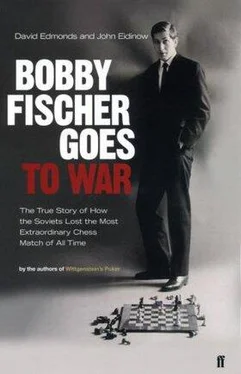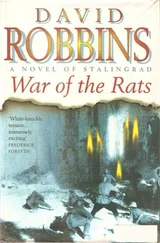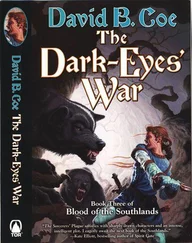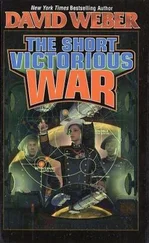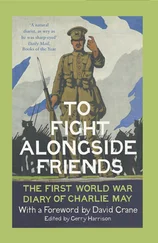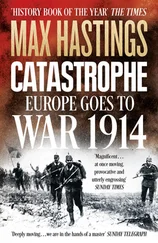In connection with the above said our delegation has handed over the statement to this effect to the Chief Arbiter and the Organizers of the Match which contains the urgent request that the playinghall and the things in it should be examined with the assistance of competent experts and that the possibility of the presence of any outsiders in the place allocated to the participants should be excluded.
E. Geller
On 3 August 1972, the next actor to play James Bond had been announced; henceforth Roger Moore would star as the British secret service agent 007, licensed to kill. Iceland might have been his first assignment. There was a gentle wave of sniggering through the audience when the Soviet allegations were publicized. “We will get 007 to investigate the hall,” quipped a member of the Icelandic Chess Federation.
In an explanation of why Reykjavik so ignited the public imagination, the rich stream of chess influence, allusion, and archetype in literature and film must play a part. Democrat against totalitarian, individual against machine, plot and counterplot, the images of chess player as alone and without feeling, insane but brilliant, scheming and utterly devoid of morality—some or all of these shaped (particularly Western) perceptions of the match. No doubt some of the Reykjavik jesters remembered the 1963 James Bond film, From Russia with Love, based on the earlier novel. From Russia with Love takes the plotting theme straight into the cold war. It reinforces our apprehension that the skills needed to control events on the chessboard are transferable—in this case, to a diabolical Soviet plot against the British secret service and its star agent, 007: Bond, James Bond.
The film opens with the final game of an international grandmaster tournament. Kronsteen, all high forehead, heavy eyelids, and intense, unblinking eyes, is competing against a Canadian called MacAdams.
“Kronsteen” is close in sound to “Bronstein,” and the game in the movie is in fact a variation of a brilliant match from Leningrad in 1960 between two Soviet grandmasters, the then world title challenger David Bronstein and Boris Spassky. In the movie, Kronsteen is victorious, having risked defying an order to break off the match and report to the clandestine international criminal organization SPECTRE (Special Executive for Crime Terror Revenge and Extortion), where he is Director of Planning. In real life, Bronstein lost when Spassky made a dazzling rook sacrifice, setting up a spectacular twenty-three-move victory. The other difference is that in the film, two of the pawns have been removed—the speculation is that the director, Terence Young, felt that aesthetically they ruined the shot. Without these pawns, Spassky’s combination would have failed; in cinemas worldwide, chess players shook their heads.
In Reykjavik, chess players shook their heads at Geller’s statement. But if, when the laughter stopped, audience and officiais had read the statement in detail, they would have had an unprecedented glimpse into the tensions within the Soviet camp. Although on the surface the statement was aimed at Fischer, it was also born of a deep frustration with Spassky and what Geller describes as his “impulsiveness,” his “slackening of concentration,” his not taking advantage of the challenger’s “technical mistakes” and failure “to grasp the position.” Then there is Geller’s view that the fight, now at game seventeen, was approaching its decisive stage. Ivo Nei later wrote that game seventeen was for Spassky practically the last chance to change the course of the match. In Moscow, they were saying, “The train has left the station.”
The timing is also curious. The reference in Geller’s statement to Fischer’s “repeated demands” suggests that the real trigger for the letter was Fischer’s latest ultimatum, coupled with the aggrieved feeling that the organizers always surrendered to him.
The chief arbiter said Geller’s allegations would have to be examined. “From the American side, we have had fantastic things, so why not from this side also?” Guards were positioned at the hall around the clock to prevent any nocturnal espionage. The American delegation offered a sophisticated explanation for their insistence that each player retain his own chair; Fischer was four inches taller than Spassky, and his chair had been adjusted accordingly. Cramer called the allegations “garbage. What experts do they want to examine the hall? The KGB?” He was nearer the truth than he knew.
As for the seventeenth game itself, once again Fischer unpacked a shock opening: a Pirc Defense (named after Slovenian grandmaster Vasja Pirc)—Fischer had never used it before in tournament play. In the Pirc, which has always been considered mildly eccentric, black concedes the center in the expectation of eventual counterplay. The main talking point, however, was the manner of the end. A player can claim a draw if the same position is repeated three times. On move forty-five, Fischer summoned Lothar Schmid and they conferred for a short period while examining the score sheet. Then Schmid nodded and the clocks were stopped. If Fischer moved his rook to el, the same position would indeed have occurred three times. Spassky afterward remained in his seat; the draw by repetition appears to have taken him by surprise. He was rook for knight up and was expected to battle on, though whether he could have achieved a breakthrough is unclear.
The game over, the Icelandic organizers approached two local scientists to examine the scarcely veiled charges of electronic and chemical chicanery. One was Dadi Augustin, an electrical engineer; the other was Sigmundur Gudbjarnason, a U.S.-trained professor of chemistry who had returned to his native Iceland from Detroit two years earlier. Augustin would investigate the lights, while it was Gudbjarnason’s job to inspect the chess table and the chairs: “When I returned from America, I brought back with me a state-of-the-art gas Chromatograph. It enabled me to analyze chemicals. We put on disposable gloves and took smear tests by wiping the table and chairs with a special tissue.” He also took samples from the walls and the stage. All were carefully placed in plastic bags marked “Fischer’s chair,” “rear wall,” and so on. They agreed to conduct their investigations gratis. Says Gudbjarnason, “It was our contribution to the match; we wanted to ensure that it would continue.” Had the Soviets known that, they might well have questioned the objectivity of the evaluation.
Gudbjarnason then set about comparing the profile of the chemicals on the one chair with that of the other and examining the surface swabs from both sides of the table. Throughout this period, the chemistry professor refused to answer the question put to him by journalists: Was it indeed possible surreptitiously to infect someone, in the way the Soviets had alleged? In part, he was silent because he did not want to spread alarm, but “I knew it was feasible, and I’m sure the Russians and the Americans knew it could be done. I’m sure they have used this kind of technique in the past.”
The study took several days to complete; they wrote up their findings in a short report, only a few pages in length. This was then handed in to the Icelandic assistant arbiter, Gudmundur Arnlaugsson. The Icelandic Chess Federation said Soviet charges of tampering were unfounded. The bottom line was that Gudbjarnason had found nothing wrong—the chemical composition of the chairs and either side of the table was identical and, as one would expect, consisted mainly of the materials used in polishing. Augustin had more luck—in the huge lighting fixture he found two dead flies, prompting much press hilarity.
However, that did not settle the matter: something unusual was observed. X-rays were taken by the Icelandic Maritime Administration (they routinely took X-rays to check the welding of shipping). The X-ray of Fischer’s chair appeared to show a long, tubelike object with a cylindrical loop at one end. It did not appear in Spassky’s chair. A second X-ray was taken. This time there was nothing. The chair was later dismantled. Inside they found some wood filler, apparently there because of a crack in the plywood seat. Loftily, the organizers took it to be the item seen in the first X-ray (though they never explained why in that case it did not show up in the second).
Читать дальше
